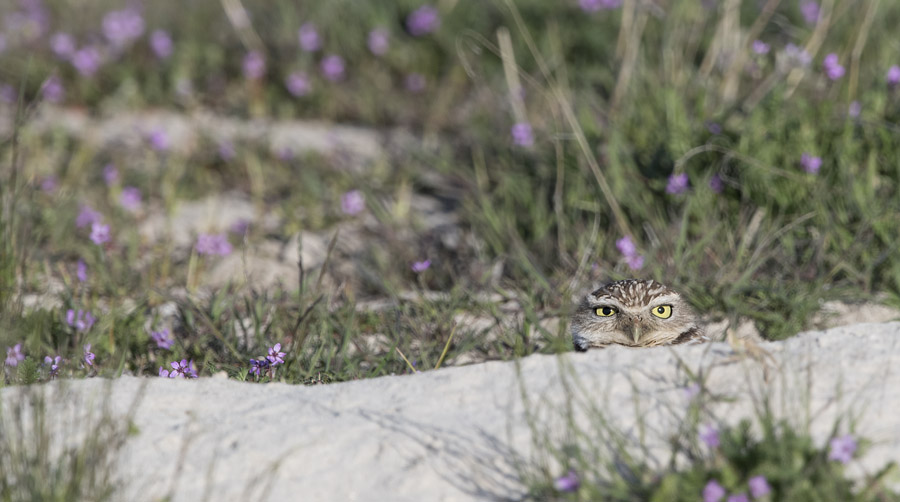 Female Burrowing Owl peeking out of her burrow – Nikon D500, f7.1, 1/2000, ISO 400, Nikkor 500mm VR with 1.4x TC, natural light, not baited
Female Burrowing Owl peeking out of her burrow – Nikon D500, f7.1, 1/2000, ISO 400, Nikkor 500mm VR with 1.4x TC, natural light, not baited
The strong winds ripping through northern Utah yesterday morning kept most of the birds down on Antelope Island State Park and the birds that were visible seemed very skittish. The birds I did see flying past zipped by at extremely fast speeds because of the wind and they were impossible to track with my lens because of that.
But that doesn’t mean I didn’t have birds to photograph because the Burrowing Owls on the island were around and sticking close to their burrows.
What really tickled me about the Burrowing Owls I photographed yesterday were all the pink wildflowers around the burrow that were included in my photos.
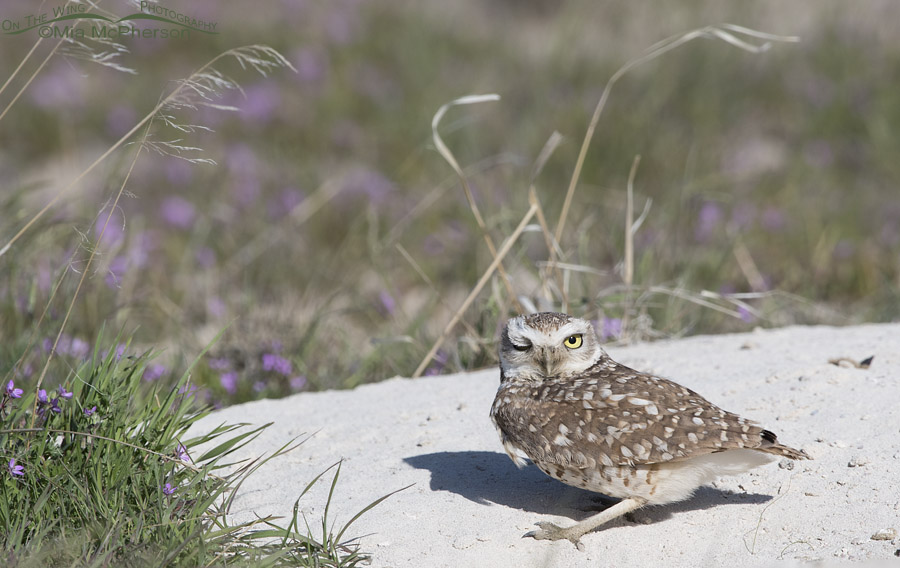 Winking adult Burrowing Owl – Nikon D500, f7.1, 1/2500, ISO 400, +0.3 EV, Nikkor 500mm VR with 1.4x TC, natural light, not baited
Winking adult Burrowing Owl – Nikon D500, f7.1, 1/2500, ISO 400, +0.3 EV, Nikkor 500mm VR with 1.4x TC, natural light, not baited
Until yesterday I had very few images in my portfolio of Burrowing Owls that have wildflowers in the frames but after my session with these owls yesterday I now have plenty.
This male Burrowing Owl squatted down often to keep a low profile in the wind, or at least that is what it seemed like he was doing to me. I was inside a vehicle with my lens stuck out the window and even my lens was being pushed around by the wind that buffeted my lens hood. For comparison my lens without the attached camera weighs 8.55 pounds while this tiny owl weighs about 5.3 ounces.
This owl may have winked its eye because of the wind and debris the wind kicked up.
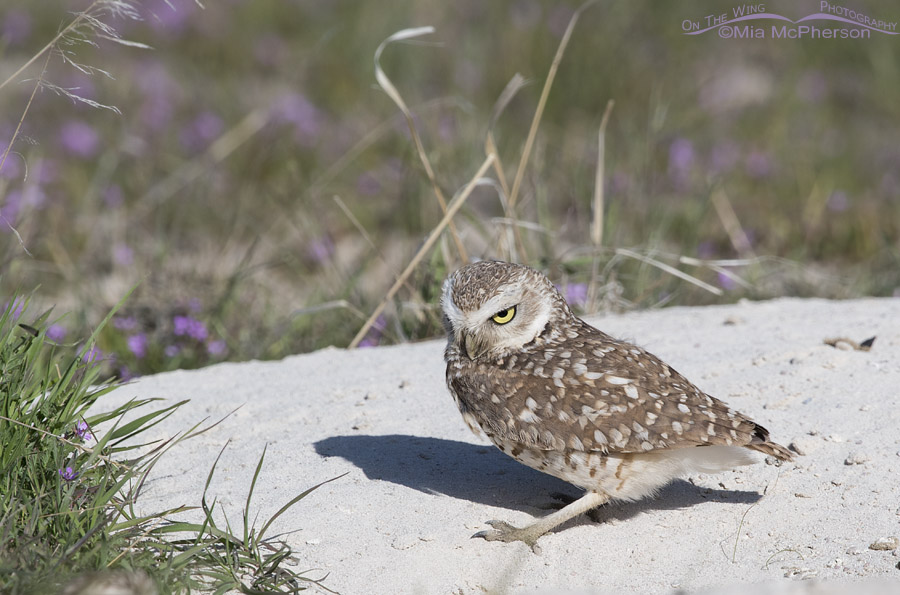 Male Burrowing Owl checking out the burrow – Nikon D500, f7.1, 1/2000, ISO 400, +0.3 EV, Nikkor 500mm VR with 1.4x TC, natural light, not baited
Male Burrowing Owl checking out the burrow – Nikon D500, f7.1, 1/2000, ISO 400, +0.3 EV, Nikkor 500mm VR with 1.4x TC, natural light, not baited
The actual entrance to the owl burrow in directly below this owl and the out of focus head of the female is at the lower left hand side of this frame. She stayed near the entrance of the burrow the entire time I photographed these owls. She may not have wanted to deal with the wind at all.
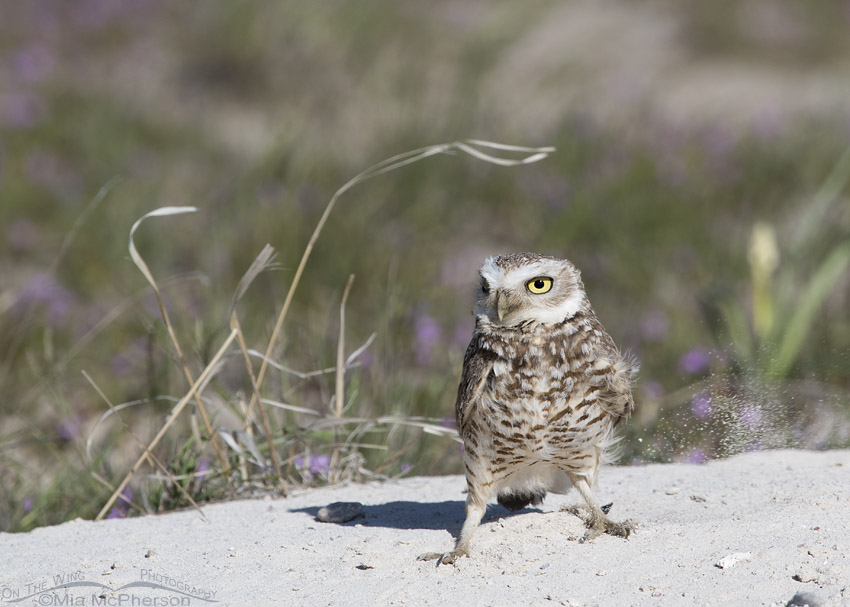 Male Burrowing Owl kicking up sand in a stiff wind – Nikon D500, f7.1, 1/1250, ISO 250, +0.3 EV, Nikkor 500mm VR with 1.4x TC, natural light, not baited
Male Burrowing Owl kicking up sand in a stiff wind – Nikon D500, f7.1, 1/1250, ISO 250, +0.3 EV, Nikkor 500mm VR with 1.4x TC, natural light, not baited
In this photo the male owl had moved one of his feet to change position and there is blowing sand behind the owl from just that bit of movement. I am not sure how windy it was at the time but the south wind was quite strong.
 Burrowing Owl and blowing sand – Nikon D500, f7.1, 1/1250, ISO 250, +0.3 EV, Nikkor 500mm VR with 1.4x TC, natural light, not baited
Burrowing Owl and blowing sand – Nikon D500, f7.1, 1/1250, ISO 250, +0.3 EV, Nikkor 500mm VR with 1.4x TC, natural light, not baited
And one frame later I caught the owl moving its foot that also kicked up the sand. If this is oolitic sand, and I suspect that it is, it is lighter than other types of sand and can blow around easily.
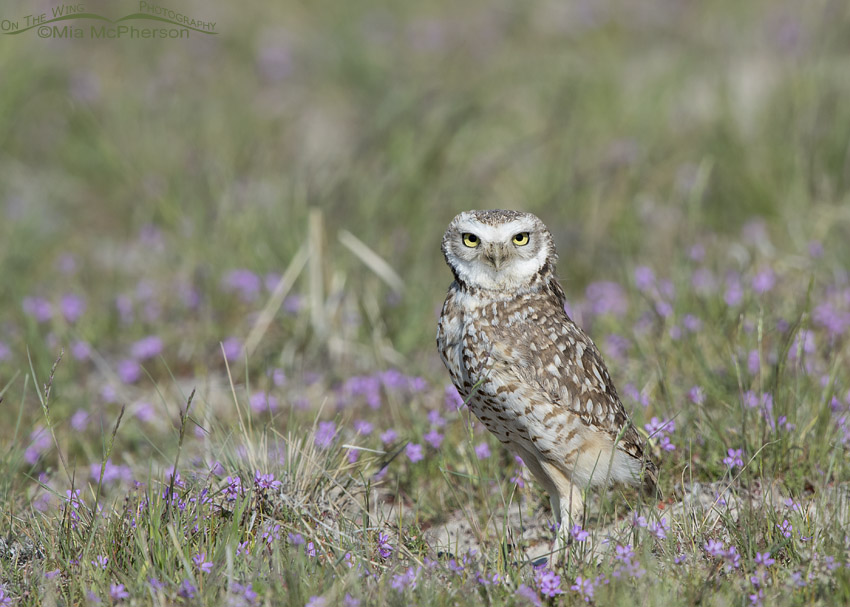 Alert male Burrowing Owl in a field of Filaree – Nikon D500, f7.1, 1/1250, ISO 250, -0.3 EV, Nikkor 500mm VR with 1.4x TC, natural light, not baited
Alert male Burrowing Owl in a field of Filaree – Nikon D500, f7.1, 1/1250, ISO 250, -0.3 EV, Nikkor 500mm VR with 1.4x TC, natural light, not baited
When the male Burrowing Owl moved away from the burrow he was surrounded by tiny wildflowers called Redstem Filaree that are currently blooming heavily on the island. These tiny flowers can turn the hillsides pink when they are in full bloom and some of the hillsides on the island right now look pink because of them.
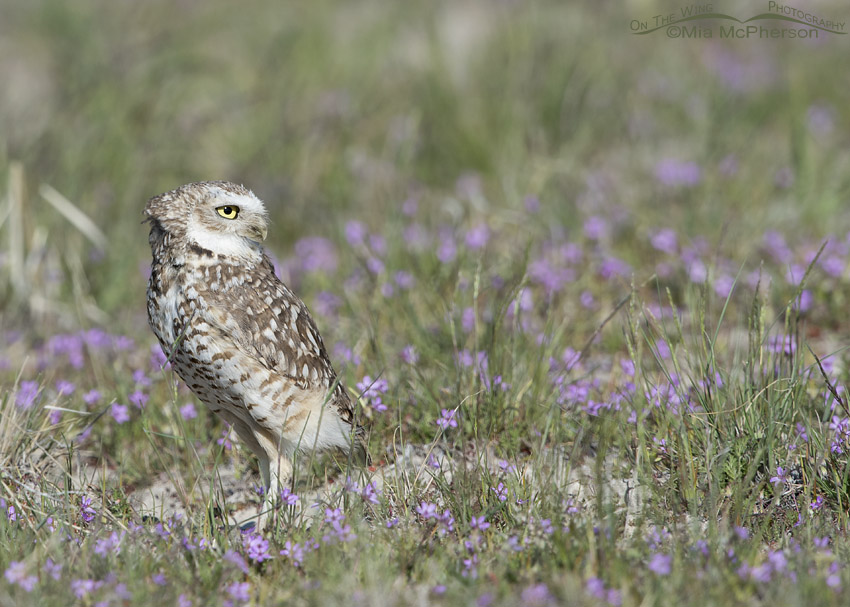 Male Burrowing owl in a field of wildflowers – Nikon D500, f7.1, 1/1250, ISO 250, -0.3 EV, Nikkor 500mm VR with 1.4x TC, natural light, not baited
Male Burrowing owl in a field of wildflowers – Nikon D500, f7.1, 1/1250, ISO 250, -0.3 EV, Nikkor 500mm VR with 1.4x TC, natural light, not baited
The filaree is tiny but so are these Burrowing Owls, they are only about the size of a soda can. And the grasses near the owl are very short right now too.
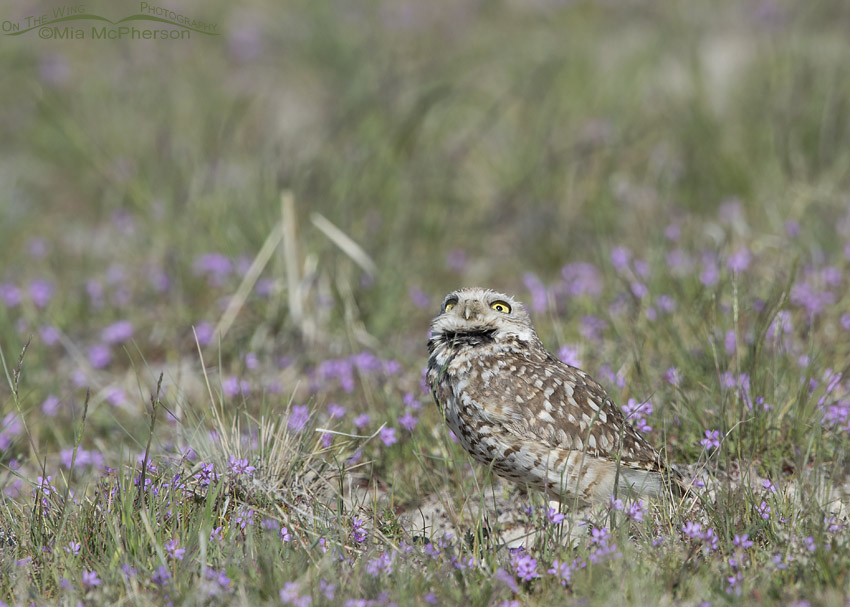 Burrowing Owl male checking out the sky – Nikon D500, f7.1, 1/1250, ISO 250, -0.3 EV, Nikkor 500mm VR with 1.4x TC, natural light, not baited
Burrowing Owl male checking out the sky – Nikon D500, f7.1, 1/1250, ISO 250, -0.3 EV, Nikkor 500mm VR with 1.4x TC, natural light, not baited
The male owl was aware of our presence but spent most of his time looking around and into the sky for predators. I have seen Peregrine Falcons launch attacks on Burrowing Owls so they need to keep an eye on the sky.
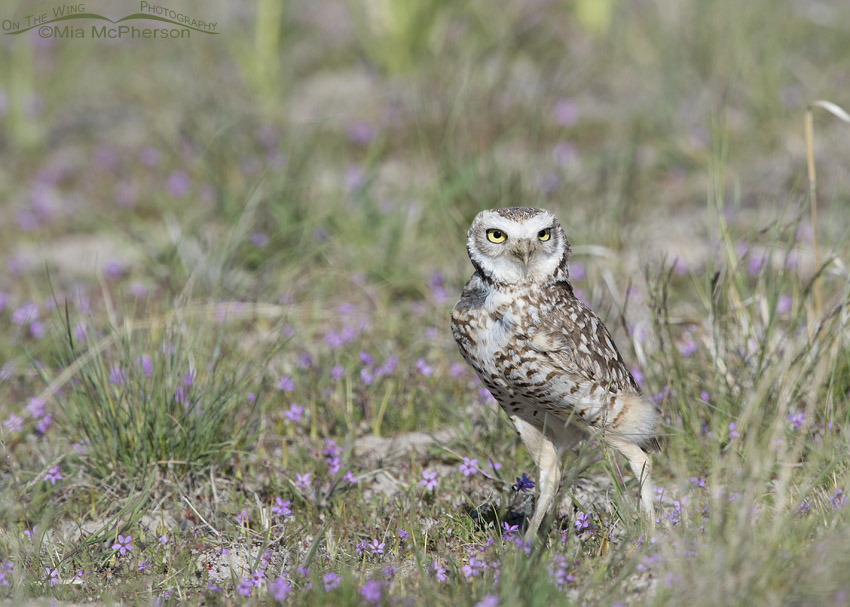 Burrowing Owl male on a windy day – Nikon D500, f7.1, 1/1000, ISO 250, Nikkor 500mm VR with 1.4x TC, natural light, not baited
Burrowing Owl male on a windy day – Nikon D500, f7.1, 1/1000, ISO 250, Nikkor 500mm VR with 1.4x TC, natural light, not baited
When the male stood erect it seemed like he struggled to stay standing in the wind. I’d seen that happen with a pair of Long-billed Curlews just minutes before I started to photograph the owls.
The wind got stronger throughout the day and caused semis to flip over on I-80, trees to fall on homes, widespread power outages, fences to collapse and airborne debris even broke windows on some cars. Flights were delayed and diverted at the Salt Lake airport too.
I’m sure the owls I photographed are okay because they could escape into the safety of their burrow but I know that yesterday I would not have wanted to be another species of bird in those high winds. It howled for most of the day and into the evening.
It was challenging to photograph these Burrowing Owls and wildflowers yesterday in the windy conditions but I am glad I had the opportunity because the wildflowers won’t last all that long.
I almost forgot to mention this, we were a good distance from this burrow and I cropped these images to between 50% and 60% to compensate for that distance. A closer approach would go against my personal ethics for bird photography. The photo is never as important as the safety and comfort of my subject. I truly hope that other people will give this burrow (and all the other owl burrows) respect by keeping their distance. They can be loved to death.
And… the biting gnats (no-see-ums) are out on the island now and even though the wind yesterday kept them mostly at bay I now have an itchy bump on my temple from one of the nasty buggers.
Life is good.
Mia
Click here to see more of my Burrowing Owl photos plus facts and information about this species.
Powerful winds buffet Utah, creating chaos with power, traffic, flights, property damage
Redstem Filaree is an introduced herbaceous annual which has become invasive in deserts and arid grasslands. I can say with absolute certainty that it grows well on Antelope Island.


Wow. And more wow. And even more wow.
Great series of pics and a terrific narrative. Owls, especially your owls, are such a fascinating subject. Thanks Mia.
Mia!! These are BRILLIANT!!! They have so much character
Another wonderful series. Love that peek-a-boo shot in particular. Thank you.
I had the same reaction to the first image as Patty – very cute. And love all the blooms too.
I was cutting the grass in the wind and not a single flying pest bothered me (for once).
Beautiful photos, the flowers are lovely. It looks like we have hopes for a good breeding year for the owls. I have seen many active nests.
Your subject matter is a big favorite with me.
These have got to be the funniest owls in existence…they don’t have to be doing anything to make me laugh. The first one, just peeking out of the burrow, is hilarious! love the one bracing against the wind, too…Life always seems brighter when I see images of them like these…i sure wish I could see them “in person”!
Wonderful photos Mia.
I love these photos!
It was certainly windy, I was out there too, but your shots are just great
LOVE these!
How wonderful these are Mia–thank you for sharing. LOVE that winking, little owl 😉 Makes me really want to get back to Antelope Island…
These are gorgeous!